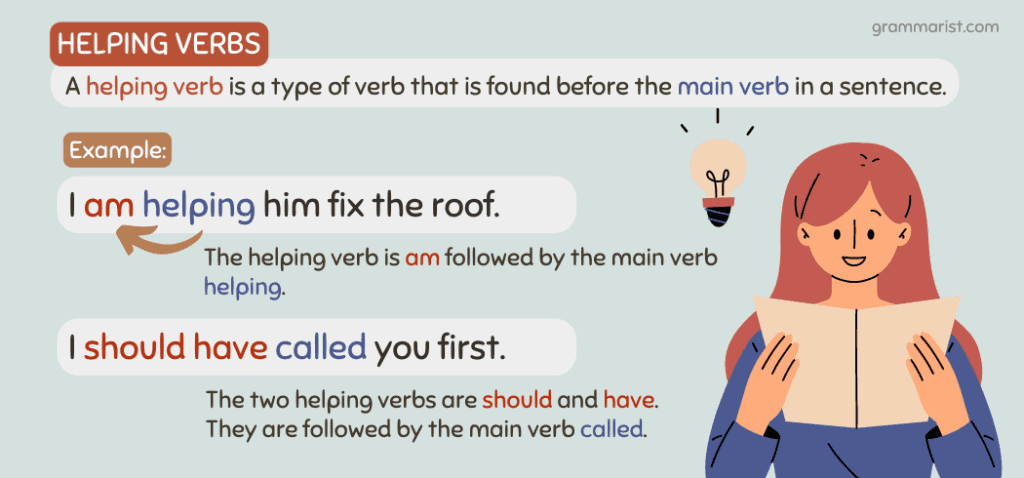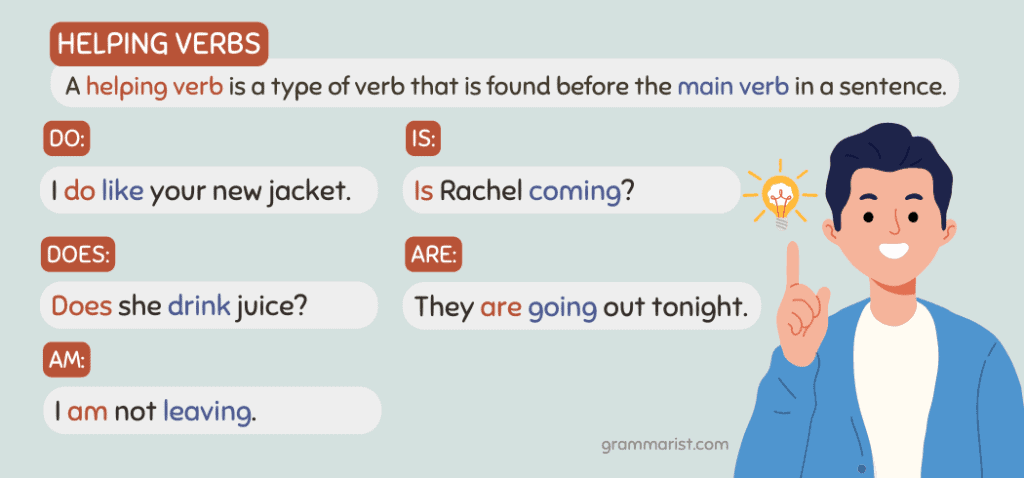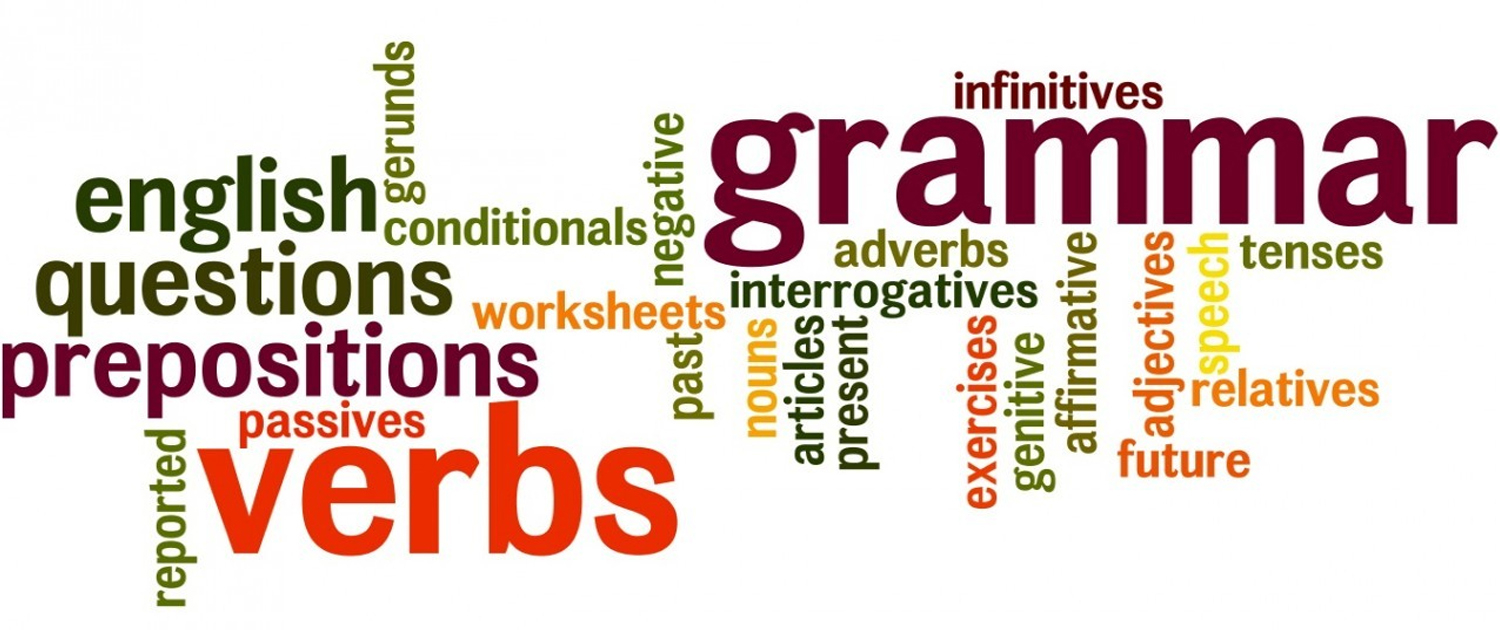The most common helping verbs are do, does, am, is, and are. Let’s talk about when to use these six helping verbs in sentences.
What Are Helping Verbs?

In English grammar, a helping verb is a type of verb that is found before the main verb in a sentence. For example:
- I am helping him fix the roof.
In this sentence, the helping verb is am followed by the main verb helping.
You can find more than one helping verb in a sentence. For example:
- I should have called you first.
Here, the two helping verbs are should and have. They are followed by the main verb called.
When to Use Do, Does, Am, Is & Are

The helping verbs do, does, am, is, and are follow different grammar rules based on the verb tense.
Examples of When to Use Do in Sentences
The rules on when to use do and does can be confusing. But we use do when the subject is I, you, or in plural form. This auxiliary verb is also used in the present simple tense.
In its emphatic form, do gives extra force to the main verb. For example:
- I do like your new jacket. (Do as the helping verb and like as the main verb)
We can also use “do” in question sentences. For example:
- Do you eat waffles? (Do as the helping verb and eat as the main verb)
Do is also used in the negative form with the word not. Its contracted form is don’t. For example:
- I don’t want to move to a new city. (Do as the helping verb and want as the main verb)
Examples of When to Use Does in Sentences
Does is also in the present simple tense used with a singular subject except I and you. Like do, we can use does in emphatic, negative, and question forms. For example:
- Emphatic form: She does love diamonds (Does as the helping verb and love as the main verb)
- Question form: Does she drink juice? (Does as the helping verb and drink as the main verb)
- Negative form: Taylor does not play the violin. (Does as the helping verb and play as the main verb)
Examples of When to Use Am in Sentences
Am is the helping verb that refers to “to be” when the subject is I. It’s followed by the main verb in the present participle to form the present continuous form of the verb. For example:
- Affirmative form: I am washing the dishes. (Am as the helping verb and washing as the main verb)
- Question form: Am I seeing things you don’t see? (Am as the helping verb and seeing as the main verb)
- Negative form: I am not leaving. (Am as the helping verb and leaving as the main verb)
Examples of When to Use Is in Sentences
Use is when the subject is in the third-person singular. It’s followed by the main verb in the present participle to form the present continuous form of the verb. For example:
- Affirmative form: She is cooking soup. (Is as the helping verb and cooking as the main verb)
- Question form: Is Rachel coming? (Is as the helping verb and coming as the main verb)
- Negative form: He is not writing the article. (Is as the helping verb and writing as the main verb)
Examples of When to Use Are in Sentences
Use are when the subject is in second-person singular or third-person plural. It’s followed by the main verb in the present participle to form the present continuous form of the verb. For example:
- Affirmative form: They are going out tonight. (“Are” as the helping verb and going as the main verb)
- Question form: Are you seeing someone else? (“Are” as the main verb and seeing as the main verb)
- Negative form: We are not talking. (“Are” as the main verb and talking as the main verb)
Personalización
Al ofrecer servicios adicionales como clases particulares y tutores, garantizamos un enfoque personalizado y adaptado a las necesidades individuales de cada estudiante. Esto aumenta la eficacia del aprendizaje y mejora la capacidad del estudiante para comprender y aplicar el idioma.
Soporte adicional
Nuestros servicios adicionales proporcionan a los estudiantes el apoyo extra que necesitan para tener éxito en su aprendizaje del idioma. Los tutores y las clases particulares ayudan a los estudiantes a superar los desafíos y dificultades del idioma, lo que les permite alcanzar su máximo potencial.
Experiencia y habilidades
Nuestros tutores altamente capacitados y experimentados en la enseñanza del idioma, aseguran que nuestros estudiantes reciban la mejor educación posible en el idioma. Los tutores brindan a los estudiantes una comprensión más profunda del idioma y las habilidades necesarias para aplicarlo en situaciones reales.
Bueno para mejorar
En CUU English Language Center, entendemos que el tiempo es valioso, por lo que ofrecemos horarios flexibles que se ajustan a sus necesidades.
Nuestros tutores pueden venir a su lugar de trabajo, su casa, o en nuestras aulas para impartir clases privadas en el momento que sea más conveniente para usted.


